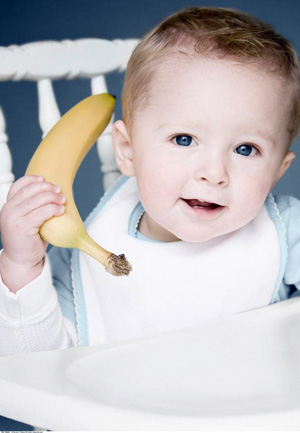Baby's first foods

From 6 months old your baby can try a range of foods. Your baby will cope best with one new food at a time and small amounts to start with. If you buy baby food, check the labels for the age and stage they suit. As your baby gets older, you can start introducing more variety into their diet. Eventually, your baby will be able to eat the same foods as you.
6 months
Foods |
How to prepare them |
Cereals and rice Plain rice. Congee. |
Purée. |
Fruits Apple, apricot, mango, pear, plum, ripe banana, avocado, pawpaw, peach. Remove skins, pips, stones, and seeds. |
|
Vegetables Kūmara, potato, carrot, pumpkin, parsnip, kamokamo or marrow, taro, cassava, manioke(a), yam. Remove skins, pips, and seeds. |
|
Meat Lamb’s liver is a good source of iron, but it is best to offer liver only once a week. |
|
Beans and pulses Dried beans, peas, and lentils. |
|
7-8 months
Your baby can eat a good and different variety of first foods, which you can see below. You can also offer them foods with more texture to help them learn how to chew. Process the food for a shorter time or mash soft foods with a fork or masher.
Offer your baby 2–3 meals a day.
Foods |
How to prepare them |
A variety of different coloured |
Remove stalks and ‘stringy bits’ from leafy green vegetables, such as pūhā, spinach, silverbeet, bok choy—cook and mash them well. |
Mashed fruit. |
Cook to soften if necessary before mashing. |
Dairy products—cheese, yoghurt, |
As is, cut into small pieces or grated. |
Small pieces of toast—white or fine wholemeal, rusks. |
Cut small, but stay with them in case they choke. |
Pasta and noodles. |
Cook and mash. |
Tofu, tempeh. |
As is, or cut into small pieces |
Egg. |
Cook and mash. |
Bought baby food. |
Check the labels for the age they suit. |
8–12 months
Start to offer your baby solids before your baby’s breast milk or formula feed. Giving your baby their breastfeeds or formula is still important for their growth, but you may notice they want fewer feeds.
By this stage, your baby will probably be having 3–4 meals a day, with 1–2 snacks. Your baby may now enjoy a large variety of types of foods, flavours, and textures.
Your baby won’t be ready for cows’ milk and soya milk until they are 1 year old.
Your baby will enjoy mashed or finely chopped foods as they learn to chew. Foods to try include:
Foods |
How to prepare them |
Fruits. |
Add pieces of raw fruit as finger foods, such as oranges, kiwifruit, berry fruit. |
Vegetables.
|
Include salad vegetables. |
Meat, fish, shellfish, kai moana. |
Cut into pieces. |
Cereals, such as porridge, wheat biscuits (iron fortified), infant muesli. |
Prepared as per packet instruction. |
Peanut butter (smooth). |
In sandwiches or on crackers. |
Finger foods such as: ripe fruit (peach, pear, banana, orange) pieces of soft or tender meat grated cheese rusks, crackers, small sandwiches cooked vegetable pieces. |
Cut into thin pieces of food they can hold on to, not big chunks. |
1 year
By 1 year, your baby will probably be eating many of the same foods as the rest of the family/whānau.
Hold off on high-fibre foods, such as heavy wholemeal bread, wholegrain bread and bran. These foods can fill your baby up too much, leaving less room for other nutritious foods.
During their second year, your toddler will learn how to chew and swallow wholegrain bread without choking on it.


